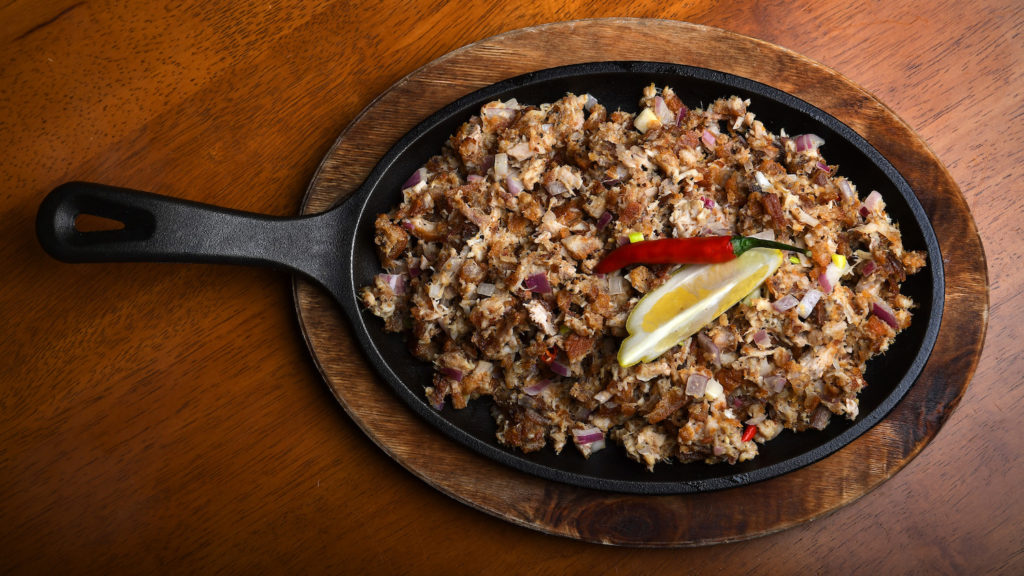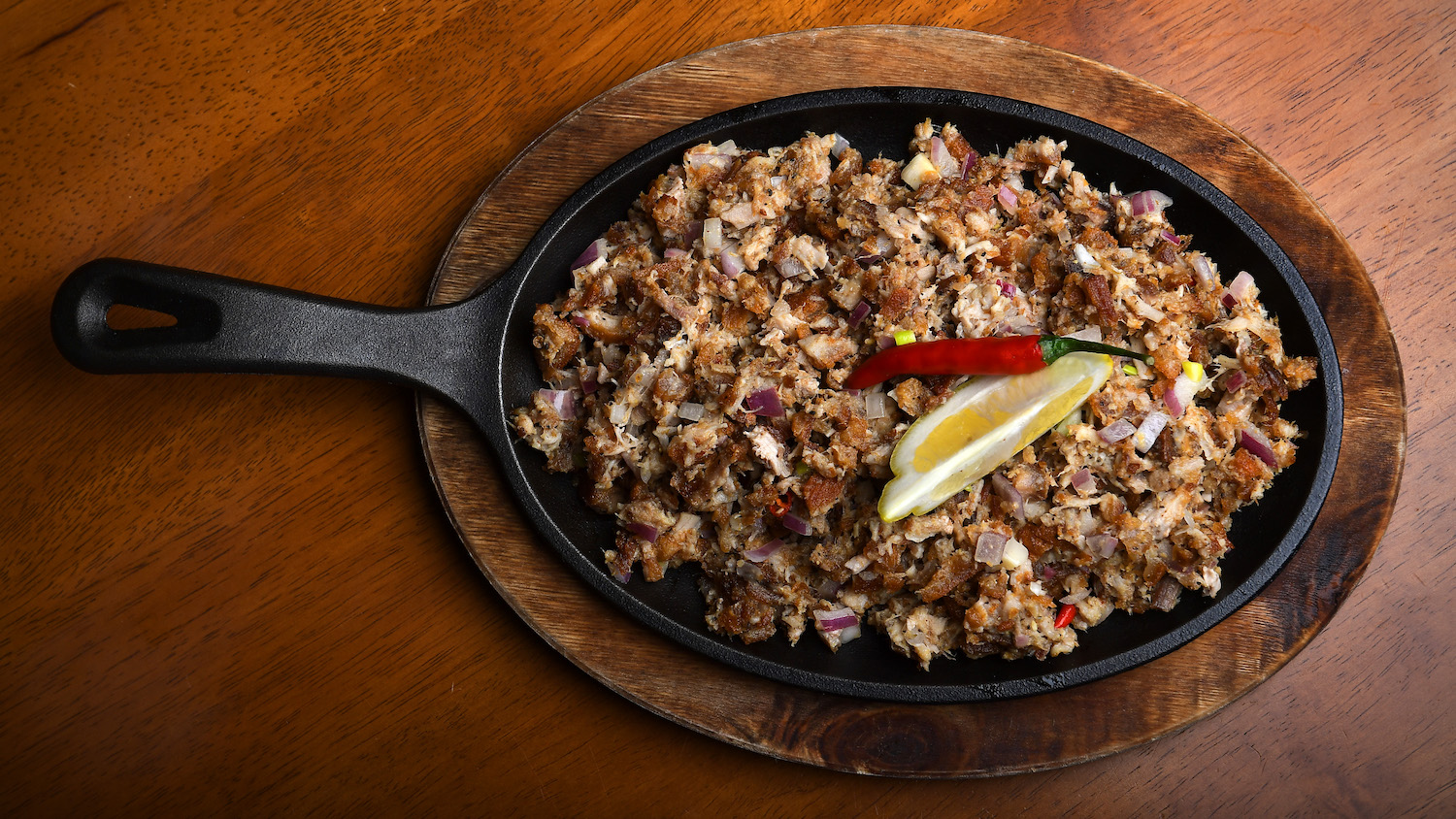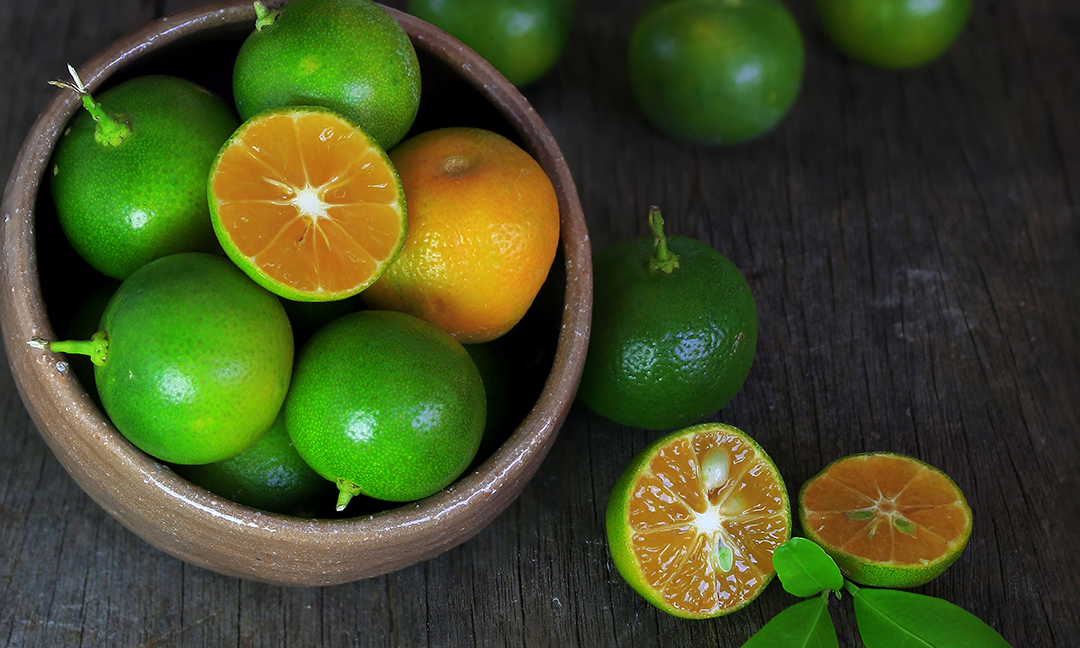It’s a tradition and a food. Sisig is more of a cooking process rather than a specific recipe. It can be served as a main course or pulutan, or appetizer, and it hails from Pampanga, the a Filipino province on the northern shore of Manila Bay. It’s such a big part of Filipino heritage that it has been declared an “intangible heritage” of Angeles City in metro Pampanga.
In fact, the exact wording of City Ordinance No. 405, Series 2017 says:
“An ordinance declaring Sizzling Sisig Babi as an intangible cultural heritage of Angeles City, and establishing systems and policies in safeguarding the original recipe of Sizzling Sisig, providing mechanisms of implementation, and for other related purposes.”
City Ordinance No. 405, Series 2017
It’s no wonder sisig is a big part of Pinoy pride.
You’re probably wondering about sisig’s origin, its prominent role in Filipino culture, and how you can make your own. We’ll dig into all of that below.
A Deep Dive into the History of Sisig
This dish likely dates back further than the 1700s, but the 1700s mark the first known written records of sisig. In 1732, it was mentioned in Spanish Friar Diego Bergano’s dictionary, Vocabulario de la Lengua Pampanga. Bergano defined it as “a salad, including green papaya, or green guava eaten with a dressing of salt, pepper, garlic and vinegar.”
The origin of the term likely comes from mannisig or mannisig manga, which refers to eating green mangoes dipped in vinegar as a snack. Historically, that’s what sisig was: a sour snack, one that was popular among pregnant women who were craving something sour.
But back then, there was no mention of pork, so sisig has evolved since.
Interestingly, there is no exact date for the addition of pork. Most believe that pork became a part of the recipe early in the 20th century during the American Occupation of Visayas and Luzon.
People in Angeles, Pampanga started using extra meat that came from American commissaries at Clark Air Base. The Air Force didn’t cook with pig heads, which meant locals could get them for almost nothing, or sometimes nothing at all. Kapampangans (a Tagalog word that refers to people from Pampanga) are known for letting nothing go to waste and for respecting food. So when pig’s head (or pork jowl) came available, they found ways to use them in their cooking.
Specifically, Kapampangans would use pig ears boiled, chopped, and then dipped in a mixture of vinegar and onions. Pregnant women ate them because tradition said that the cartilage helped fetal development. After a time, men started eating them, too, usually with their favorite alcoholic drinks.

The Sisig Queen and the Sizzling Plate
Lucia “Aling Lucing” Cunanan, known as the Sisig Queen, reimagined the dish by grilling pig ears and using the cheeks. Today, her restaurant is known as the “Sisig Capital of the Philippines,” a designation bestowed by the Philippine Department of Tourism in 1974.
If you’ve ever heard of “sizzling sisig,” that’s the next evolution of the dish. This came about when Benedict Pamintuan, owner of the Angeles City restaurant Sugay’s, decided to use a sizzling plate to serve the dish. His reasoning was that the hot plate would keep the pork fat hot, preventing it from congealing.
The history doesn’t end there.
Every December, the city of Angeles celebrates Sadsaran Qun Angeles, or the “Sisig Festival.” This tradition started in 2003, and Mayor Carmelo Lazatin made it an annual event. One of the most prominent activities? A cookoff, which sees chefs competing to make the best sisig.
Unfortunately, after Lucia Cunanan tragically passed away in 2008, the festival got put on hold for a few years. But Marquee Mall revived it in 2014 as part of their Northern Food Festival in October and November.
In 2017, the Angeles City Tourism Office organized a new festival called the “Sisig Fiesta.” Held on the Valdes Street, this was where Lucing had created her own version of the dish. Among other events at this festival, you can visit a gigantic grill where several chefs prepare a humongous batch of sisig.
So there’s the history—and sisig is not necessarily a dish made of specific ingredients like minced pork. It’s a spicy, salty and sour snack that can be made with a variety of different things. We’ll explain those in detail below.
Traditional Ingredients
The most common form of this dish is still made with the pig’s head, including the jowls or cheeks, snout and ears. But pork belly sisig is becoming increasingly popular. Flavorings include chili peppers for heat, and calamansi for sourness. When plating, finely chopped red onions are typically added as garnish.
In some parts of the world, sisig is topped with raw egg and mayonnaise. But in Pampanga, people still prepare this food the traditional way, which means: absolutely no mayo and no raw eggs. Kapampangans tend to prefer their sisig as close to the original recipe as possible.

Calamansi, a hybrid citrus fruit that comes from kumquat and mandarin orange parents, is often halved and squeezed into the recipe as well. The fruit is small with a thin peel that turns from green to orange as it ripens. Much like lemons or limes, they’re quite sour.
Calamansi trees are native to the Philippines and Southeast Asia, making the fruit a popular addition to other Filipino dishes. Authentic sisig will have either this or with vinegar to give it that signature tangy flavor.
Variations: Pork Belly, Pig Ears, Jowl, and More
Depending on who is making it and the ingredients on hand, sisig can be prepared in lots of different ways. Though pork sisig is the most widely known, there is also a version made with green mussels, which is called bilat. You can find other variations with lechon (or whole roasted pig), seafood, crocodile, python, frog, or even ostrich.
Chefs, particularly those in the Philippines, have experimented with more ingredients, like tofu, squid, tuna and chicken.
How is Sisig Made?
It’s not the ingredients that make the sisig, but the methods. The classic sisig recipe is a several-step process, and total time to cook can take almost two hours. First, the main ingredient—pig’s head, pig ears, or jowl—is boiled until the meat is tender. Any hairs are removed, after which the meat is broiled or grilled until crispy, and then chopped into small pieces.
Next come the seasonings. At this point, you would sauté finely chopped chicken liver with a chopped large onion in a wide pan over medium-high heat. Then mix in the finely chopped main ingredient.
Finally, you would stir in calamansi juice (or lemon juice), soy sauce, black pepper, chili pepper, and garlic into the pan for that salty and sour kick.
The final dish is best served on a sizzling plate garnished with chopped red onions or scallions.
One thing to add here is that the sisig cooking sauce is similar to adobo marinade. The key differences are that adobo marinade is usually made with vinegar (instead of calamansi or lemon juice), and bay leaves. With adobo, the meat is typically marinated for several hours prior to cooking, whereas in sisig, the sauce is added to the cooking process.
Where to Eat Sisig in the U.S.
Anthony Bourdain may be partly responsible for popularizing this dish in the United States. He said in a 2017 CNN Phlippines interview that he thought sisig was about to storm the world. It’s true—there are now lots of great places to try it here in the U.S.
In New York, there is Maharalika, Jeepney, and Pig and Khao, all of which are known to serve great Filipino food, including sisig. New Jersey has the restaurant Mama Fina’s House of Filipino Sisig is famous for their pork version of the dish.
In the Greater Los Angeles Area, you can get the dish at most Filipino restaurants. There’s Sari Sari Store in Grand Central Market, led by James Bear-nominated chef Margarita Manzke. LA Rose Cafe has pork belly sisig. And Silog makes theirs with braised pork belly and shoulder.

Finally, there is the hugely popular Señor Sisig. The eatery features finely chopped sisig in their signature burritos, tacos, nachos, fries, and rice plates. Señor Sisig started out as a San Francisco food truck run by Evan Kidera and Fil Payumo in 2010. Now there are at least six trucks. And the Señor Sisig restaurant opened in San Francisco in November 2019.
Perhaps Bourdain was right. Sisig does seem poised to take over the culinary world. And with good reason.
This dish hold lots of culinary significance. As a sour and salty food, it features an unusual flavor profile hard to find outside of Filipino cooking. And as a comfort food, it’s hard to beat.



